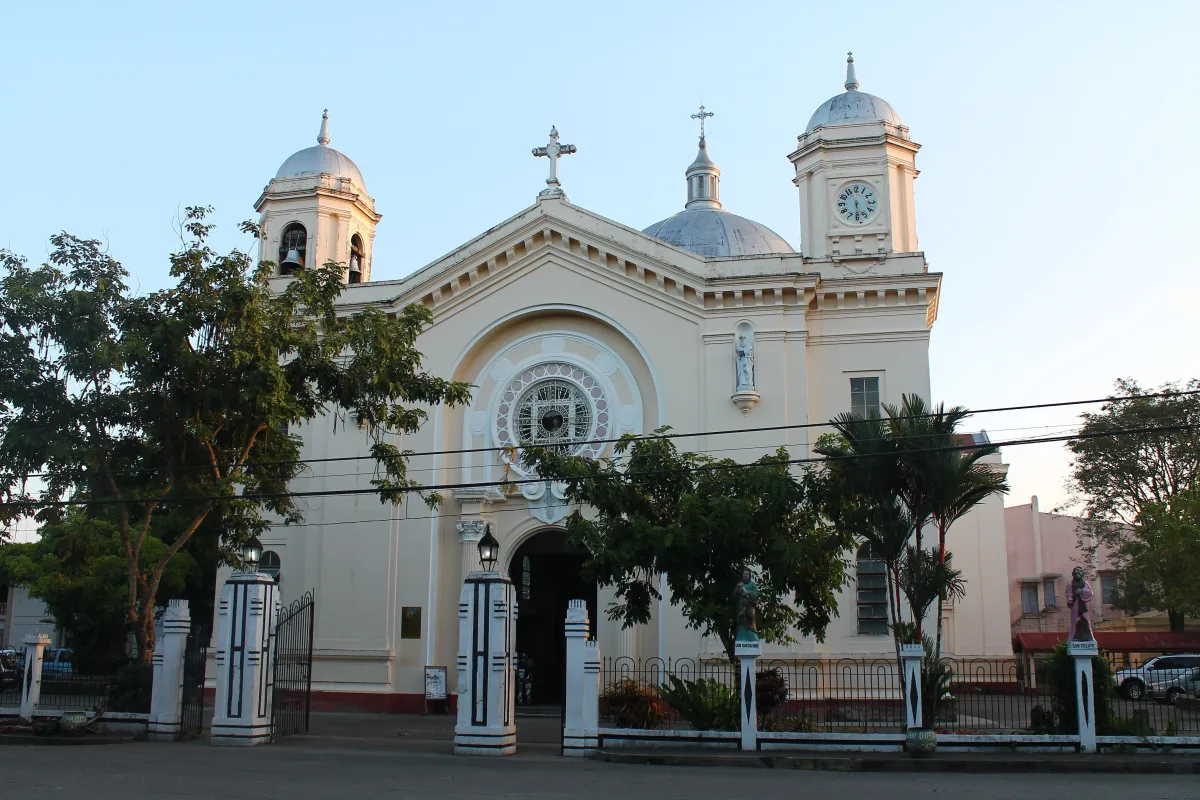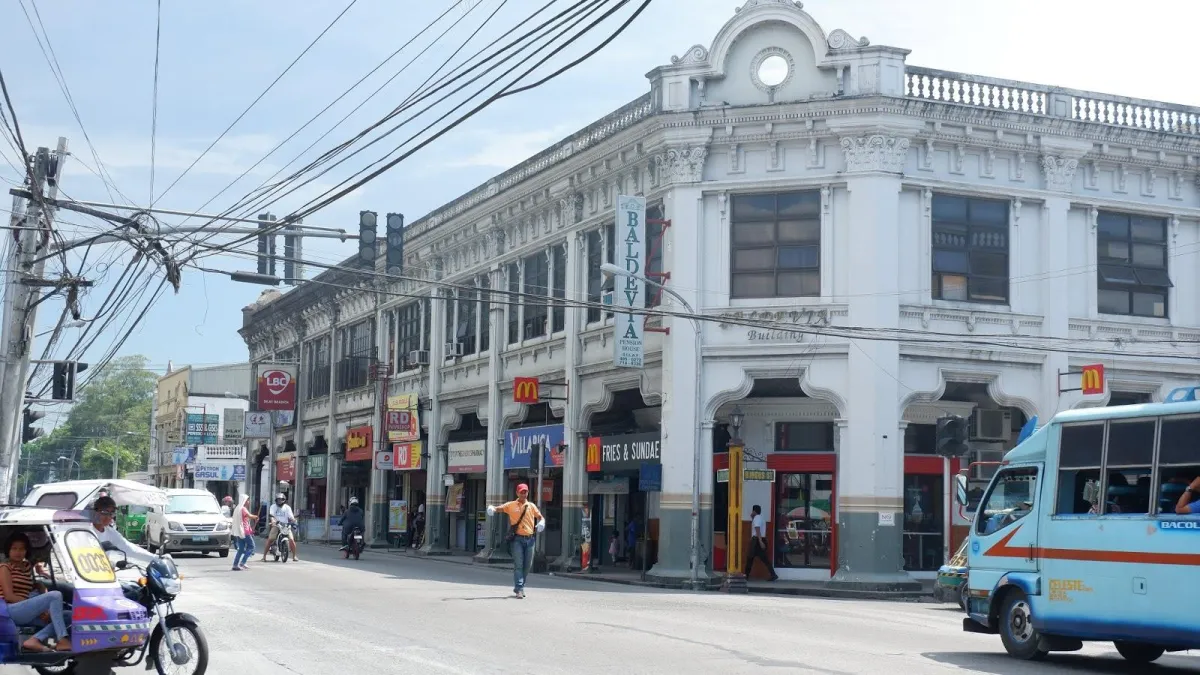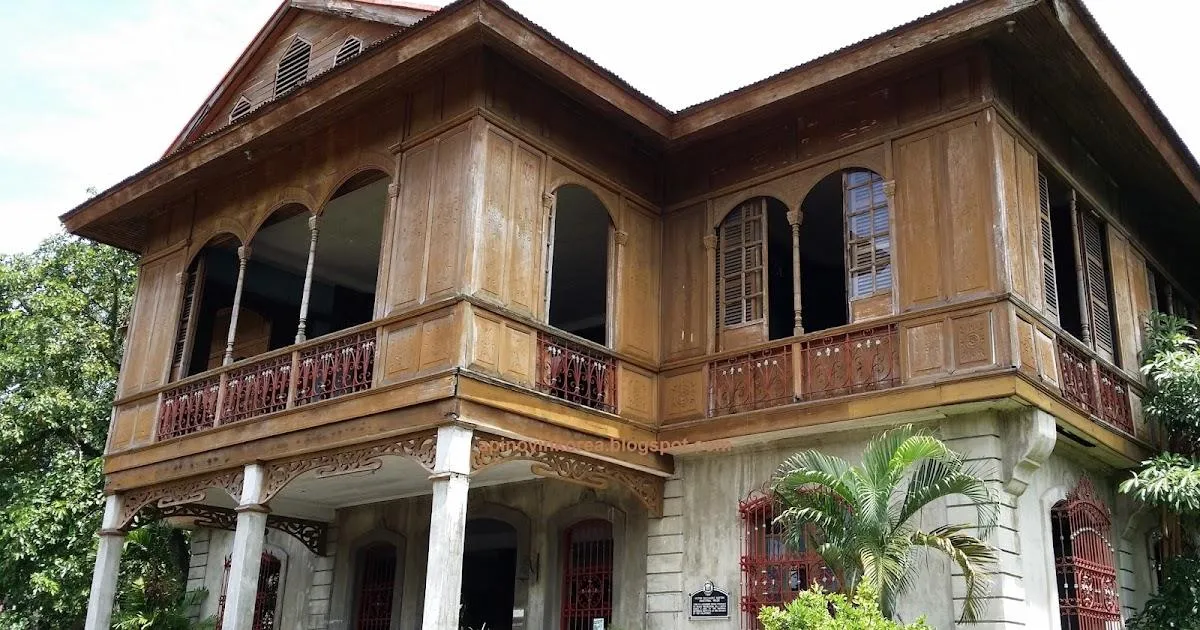⭕ SMART: 098 5973 7798 ⭕ GLOBE: 091 5874 9128 ⭕LANDLINE: 034 466 4554
Silay City, Negros Occidental
Nestled on the western coast of Negros Island in the Philippines lies a city that wears its history with pride. Silay City, often referred to as the "Paris of Negros" or the "Seat of Arts, Culture, and History," is a place where time seems to stand still amidst its well-preserved heritage and vibrant cultural traditions.
Silay's story begins long before it was officially recognized as a city. The origins of this picturesque locale can be traced back to the early Malay settlers who inhabited the fertile plains along the coastline. These early inhabitants, deeply connected to the land and sea, cultivated rice, fished the nearby waters, and laid the foundation for the community that would eventually flourish.
The Arrival of the Spanish
In the 16th century, the Spanish arrived in the Philippines, bringing with them a new chapter in Silay's history. The Spanish colonial period introduced a blend of cultures that would leave an indelible mark on the city's architecture, customs, and traditions.
Silay's transformation into a thriving town was accelerated by the presence of vast sugarcane plantations. The fertile soil, coupled with abundant rainfall, made it ideal for sugarcane cultivation. Spanish colonizers established these plantations and introduced the encomienda system, which played a significant role in shaping Silay's social and economic landscape.
Silay's Sugar Boom
By the 19th century, Silay had evolved into a bustling hub of sugarcane production. The sugar boom brought prosperity to the city and its residents, allowing them to build grand houses and estates that reflected their newfound wealth.
Silay's streets became lined with beautifully designed and intricately decorated ancestral homes, often referred to as "bahay na bato" or "stone houses." These architectural gems, characterized by their sturdy stone foundations and wide windows, showcased the fusion of Filipino, Spanish, and Chinese influences. Silay's stone houses, now considered national treasures, are a testament to the city's rich history.
The Revolution and Independence
Silay, like many Philippine cities, played a role in the fight for independence from Spanish colonial rule. The Katipunan, a revolutionary society, gained a foothold in Negros Occidental, and Silay became a center of revolutionary activity.
One of the key figures in Silay's fight for independence was Aniceto Lacson, a prominent revolutionary leader. In 1898, under Lacson's leadership, Silay was declared an independent republic, known as the "Cantonal Republic of Negros." Although short-lived, this declaration was a symbol of Silay's determination to chart its own destiny.

The American Period and Beyond
The end of Spanish colonial rule ushered in the American period, marking a new chapter in Silay's history. The city continued to prosper, driven by the sugar industry and the resilience of its people.
Silayans embraced modernization while preserving their cultural heritage. The stone houses that once stood as symbols of affluence now became reminders of Silay's storied past. Many of these houses were converted into museums, allowing visitors to step back in time and experience the city's history firsthand.
The Preservation of Heritage
In the face of rapid urbanization and development, Silayans have remained steadfast in their commitment to preserving their cultural heritage. The Silay Heritage Foundation, established in 1993, has played a pivotal role in this effort. The foundation works tirelessly to conserve and restore the city's ancestral homes and promote awareness of Silay's unique history.
Each year, the city celebrates the Kansilay Festival, a week-long event that showcases Silay's cultural heritage through various activities, including street dancing, arts and crafts exhibitions, and food festivals. The festival serves as a vibrant reminder of the city's roots and the enduring spirit of its people.
The Silay of Today
Silay City stands as a testament to the harmonious coexistence of history and progress. The city has embraced modernity while holding onto the threads of its rich past. It boasts a thriving arts and culture scene, with galleries, theaters, and music ensembles that pay homage to its heritage.
Silay's culinary traditions are another source of pride. The city's cuisine reflects a fusion of influences, with Chinese, Spanish, and Filipino flavors coming together in a delectable symphony of tastes. Visitors and locals alike can savor the flavors of authentic Negrense dishes, from the famous chicken inasal to the hearty batchoy soup.
Silay City is a charming and historic city located in the province of Negros Occidental, Philippines. Known as the "Paris of Negros" due to its rich cultural heritage and well-preserved Spanish colonial architecture, Silay is a testament to the enduring legacy of its past.
The origins of Silay City can be traced back to the early 18th century when the Spanish colonial government established settlements in the Negros Island to counter the Moro pirate raids and secure the region. Silay began as a small agricultural village, with its economy primarily centered around sugarcane farming and production.
However, Silay's transformation into a prosperous and culturally significant city can be attributed to the rise of the sugar industry in the 19th century. As the sugar industry flourished in Negros Occidental, wealthy sugar barons and hacenderos (landowners) established large sugarcane plantations in the surrounding areas, including Silay. The wealth generated from the sugar trade allowed these families to invest in grandiose mansions and intricate architectural structures.
Silay's golden era coincided with the late 19th and early 20th centuries, during which the city's elite families constructed opulent ancestral houses reflecting various architectural styles, including Spanish, American, and Filipino. These houses showcased intricate woodwork, ornate iron grilles, and elegantly designed interiors, turning Silay into a living museum of architectural heritage.
The city's prominence reached its peak during the American colonial period when sugar production continued to drive the local economy. Silay's strategic location, favorable climate, and fertile lands made it a prime location for sugarcane cultivation. The economic affluence brought by the sugar industry allowed Silay to thrive and cultivate a vibrant cultural scene.
Silay City was officially incorporated as a municipality on June 12, 1760, and it eventually attained city status on August 5, 1957. Throughout its history, Silay has been witness to numerous pivotal events in the Philippines, including the struggles for independence and the challenges of modernization.
Today, Silay City stands as a living testament to its historical legacy. The city's well-preserved heritage houses, complemented by various cultural festivals and events, draw both local and international tourists who seek to immerse themselves in its rich history and architectural beauty. Silay's story is a captivating journey through time, showcasing the intricate interplay between history, culture, and economic development that has shaped this remarkable city in Negros Occidental.

Should You Travel To Silay City In Negros Occidental
Located in the province of Negros Occidental, Philippines.
Often referred to as the "Paris of Negros" due to its well-preserved Spanish colonial architecture.
Originated as a small agricultural village in the 18th century.
Flourished during the rise of the sugar industry in the 19th century.
Wealthy sugar barons and hacenderos established grand ancestral houses in various architectural styles.
Became a municipality on June 12, 1760, and achieved city status on August 5, 1957.
Witnessed significant historical events during the Philippines' struggle for independence.
Sugarcane cultivation and production played a pivotal role in the city's economic growth.
Hosts various cultural festivals and events that celebrate its heritage and history.
Drawn tourists for its rich cultural heritage, including well-preserved heritage houses.
Showcases intricate woodwork, ornate iron grilles, and elegant interior designs in its historic homes.
Represents a fusion of Spanish, American, and Filipino influences in its architecture.
Known for its vibrant arts and cultural scene, with local artists contributing to the city's identity.
Offers a captivating journey through time, reflecting the interplay of history, culture, and development.
Why Do Filipinos Love Going To Silay City
Historical and Architectural Richness: Silay City is renowned for its exceptionally well-preserved Spanish colonial architecture, characterized by its grand ancestral houses and intricate designs. Filipinos are drawn to Silay to immerse themselves in the city's rich history and witness firsthand the cultural and architectural heritage that reflects the country's colonial past.
Cultural Heritage: The city's cultural heritage is celebrated through various festivals, events, and activities that showcase its history, traditions, and artistic talents. Filipinos often visit Silay to participate in or witness these cultural celebrations, gaining a deeper understanding of their own heritage.
Heritage Houses: The beautifully restored heritage houses of Silay are a major attraction. These houses offer visitors a glimpse into the opulent lifestyles of the past, with their impressive woodwork, ornate decorations, and unique architectural styles. Filipinos love exploring these houses and learning about the stories behind them.
Local Art and Crafts: Silay City has a thriving arts and crafts scene, with local artists creating intricate handicrafts, artworks, and other creative products. Filipinos enjoy purchasing these unique items as souvenirs and supporting local artisans.
Escape from Urban Life: Silay City offers a serene and laid-back environment compared to bustling urban centers. Many Filipinos seek a peaceful escape from the city's hustle and bustle, making Silay an attractive destination for relaxation and unwinding.
Photography Opportunities: The picturesque streets and beautifully preserved architecture of Silay provide excellent photography opportunities. Filipinos, like people from around the world, enjoy capturing the beauty of the city through their cameras and sharing these images on social media.
Culinary Delights: Silay is known for its local delicacies and cuisine. Food enthusiasts from all over the Philippines visit the city to savor authentic regional dishes and unique culinary offerings.
Educational Value: Silay City's historical significance and cultural heritage offer educational value, making it an ideal destination for school trips, students, and history enthusiasts who want to learn about the Philippines' past.
Community and Warmth: The people of Silay are known for their hospitality and friendliness, making visitors feel welcomed and at home. Filipinos appreciate the warmth of the locals and the sense of community in Silay.
Sense of Pride: Many Filipinos take pride in the country's history and heritage. Visiting Silay City allows them to connect with their roots, appreciate their cultural identity, and feel a sense of national pride.
In summary, Filipinos love going to Silay City because it offers a unique blend of historical, architectural, cultural, and experiential attractions that resonate with their interests and provide a meaningful connection to their heritage.

Our Conclusion On Why People Love Silay City
In conclusion, Silay City stands out as the favorite city in Negros Occidental for a multitude of compelling reasons. Its exceptional blend of historical significance, well-preserved architectural beauty, vibrant cultural heritage, and warm local hospitality make it an irresistible destination for both locals and visitors alike. Silay City's grand ancestral houses, adorned with intricate woodwork and ornate decorations, offer a captivating glimpse into the past, reflecting a rich tapestry of Spanish, American, and Filipino influences.
The city's ability to seamlessly blend its historical charm with modern comforts provides a unique and enchanting experience. From its diverse cultural festivals and events that celebrate its identity to the thriving arts and crafts scene that showcases local creativity, Silay City offers a dynamic and enriching atmosphere that appeals to a wide range of interests.
For Filipinos, Silay City is more than just a destination; it's a place that fosters a sense of pride, connection, and understanding of their cultural roots. Its culinary delights, serene ambiance, and the genuine warmth of its residents create an environment where visitors feel embraced and cherished, making every trip a memorable and cherished experience.
Silay City's allure extends beyond its physical attributes; it's a city that captures the hearts of those who visit, leaving an indelible mark on their memories. As a favorite city in Negros Occidental, Silay City stands as a shining example of how a harmonious blend of history, culture, and community can create a truly exceptional and beloved destination.

